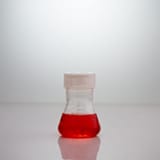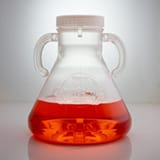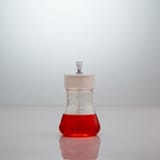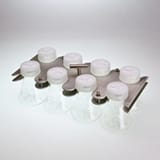Title
Optimum Growth® Protocol for Insect Cells
Description
... Sf9 and Sf21 insect cells are cell lines commonly used for expression of recombinant proteins using baculovirus systems. These cell lines were generated from the parental cell line IPBLSF21, which was derived from the pupal ovarian tissue of the fall army worm ... Sf9, Sf21, Hi5, and S2 are all compatible with the Optimum Growth® flasks ...
Products Used in Application

Optimum Growth® 125mL Flask
PTFE 0.2µm Vent Cap for Increased Aeration | Sterile
pn#931110

Optimum Growth® 5L Flask
PTFE 0.2µm Vent Cap for Increased Aeration | Sterile
pn#931116

Double Bagged Optimum Growth® 125mL Flask
PTFE 0.2µm Vent Cap for Increased Aeration | Sterile
pn#931110-DB

Double Bagged Optimum Growth® 5L Flask
PTFE 0.2µm Vent Cap for Increased Aeration | Sterile
pn#931116-DB
Related Products
Optimum Growth® Protocol for Insect Cells
... Sf9 and Sf21 insect cells are cell lines commonly used for expression of recombinant proteins using baculovirus systems. These cell lines were generated from the parental cell line IPBLSF21, which was derived from the pupal ovarian tissue of the fall army worm ... Sf9, Sf21, Hi5, and S2 are all compatible with the Optimum Growth® flasks ...

